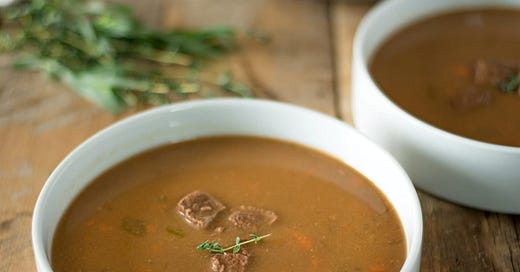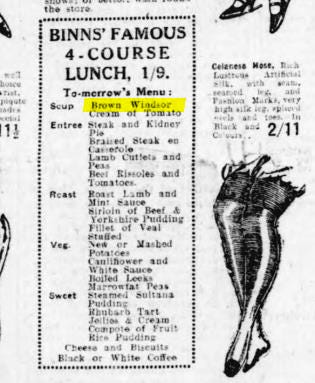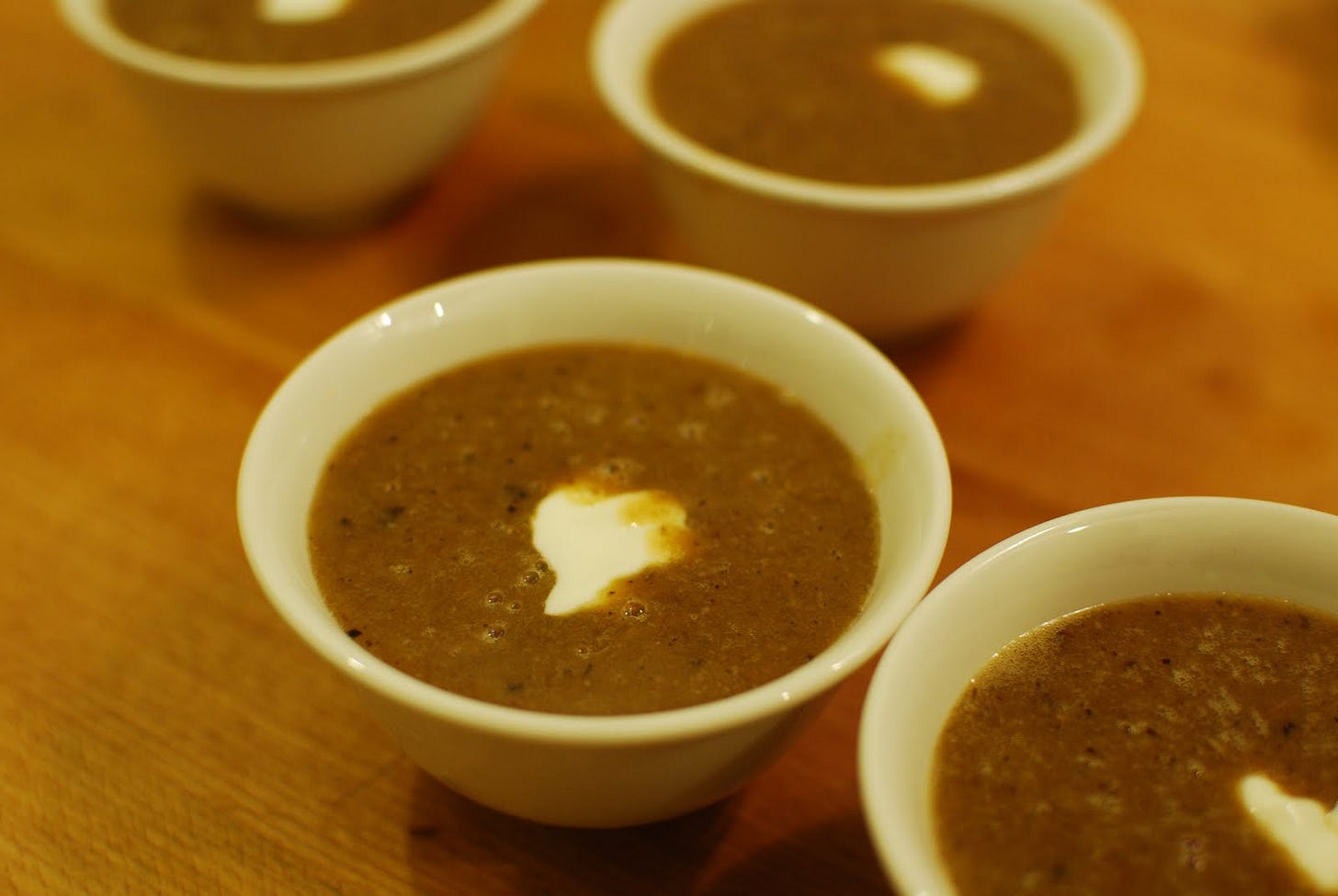We spin tales about our foods. Potato pancakes take on religious connotations. Caviar becomes a status symbol. Apple pie is patriotic. Or, consider the British dish of Brown Windsor Soup.
Brown Windsor Soup is, as the name suggests, a hearty brown stew often with beef or lamb. The Daily Mail Modern British Cookbook (1998) described the soup as a “thick meat soup … first concocted in Victorian times,” and a food.com recipe calls it “Queen Victoria’s favorite.”
But, here’s the deal: Queen Victoria never had Brown Windsor Soup. As Historian Annie Gray writes, “Brown Windsor Soup, which is often cited as a favorite dish of the Queen, did not exist at all in the 19th century.”
So, where’d the soup come from?
Now, there is evidence for 19th century “Windsor soup” –– in 1846, Charle Elmé Francatelli (chef to Queen Victoria) published a recipe for Potage á la Windsor –– but this soup was white, not brown. The first written reference to Brown Windsor Soup is from a 1926 menu that advertised “Soup – Brown Windsor; Cream of Tomato.” Thus, Brown Windsor Soup came about at least two decades after Queen Victoria died.
The soup became particularly common during World War II, when the Ministry of Food would serve Brown Windsor Soup in their British Restaurants (state-run cafeterias). The name became a catch-all for any low-quality soup with uncertain ingredients. (It makes me think of my high school cafeteria, which used soup as a home for indiscriminate leftovers: Ah, the days of broccoli-cheddar-bacon-noodle soup!) During the war, families would make the dish at home by pureeing leftovers together into a brown mystery soup, and the canned version of the soup was often just a watery gruel made from bouillon powder and starch thickener.
However, it wasn’t until after World War II that the soup came to claim a prominent place in British culinary consciousness. And it did so because of comedy shows.
The soup became the punchline to jokes about British cuisine. For instance, on the popular 1950s British radio program The Goon Squad, character Neddie Seagoon exclaimed:
“Good heavens! Issue umbrellas, the Scots are firing porridge! … If the Scots want to make it a war on nutrition, we have an English diet in our armory twice as deficient in calories as porridge and twice as deadly. … Brown Windsor Soup!”
The soup was the butt of many jokes on The Goon Show –– along with other British comedies. In the 1953 film The Captain’s Paradise, one character jokingly says: “I can thoroughly recommend the Brown Windsor Soup.” In the 1955 BBC radio show Hancock’s Half Hour, Tony Hancock considers throwing “a plate of Brown Windsor down the back of his neck.”
Through these comedy routines, the dish became a stand-in for criticisms of British cuisine as bland and boring. As historian Glyn Hughes wrote:
“Walk up to anyone in the street and ask them about Brown Windsor Soup, and they’ll say that it was terrible and horrible but everybody ate it in the Victorian era.”
Brown Windsor Soup came to epitomize a pervasive negative perception of British cuisine. Its fictitious regal origins connect it to the British monarchy (and specifically the Victorian Era which, according to historian Bee Wilson, has a reputation for ruining British cuisine… probably because they suggested boiling carrots for 45 minutes). Its rise to prevalence during World War II connects the dish to a dark chapter in modern British history. And its link to comedy connects the dish to the cultural conversation around British culinary reputation.
The soup has become a national symbol –– capturing, for better or for worse, a small bit of British identity in a bowl of brown gruel.
Notes:
This piece was largely inspired by this Atlas Obscura article, though –– after more research –– I think this article over-credits the comedy shows for the creation of Brown Windsor Soup.
Wikipedia has a comprehensive entry on Windsor soup. Also see this article from Delishably and this one from The Foods of England Project.
George Orwell wrote a piece defending English cuisine, which I didn’t have a space to cite above but is a fun read.







Love it, this topic really has wheels, really going places 🚴🏼♀️
Rumpole so looked forward to having Brown Windsor soup and a glass of Great Western claret while taking the train in Season 1 Episode 2 in ‘Rumpole and the Alternative Society.”